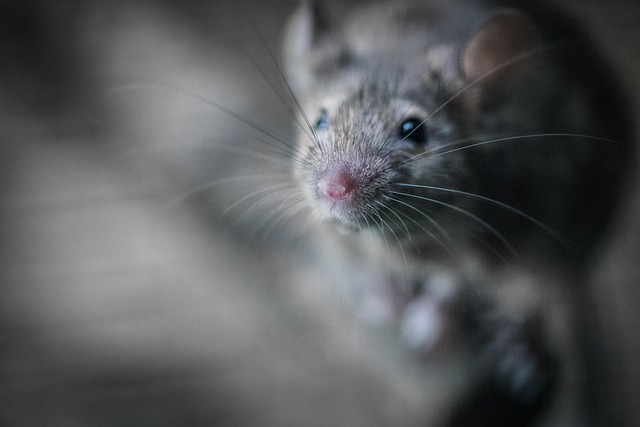Pests can cause significant damage in homes with children and pets, so understanding their behaviors is key for prevention. Regular inspections, sealing entry points, cleanliness, secure pet food storage, and safe, non-toxic control methods are essential. Using natural repellents like citrus oils, maintaining good hygiene, and encouraging beneficial insects helps create a peaceful living space. Implementing these pest prevention tips ensures a safe environment for all, avoiding harsh chemicals and promoting eco-friendly practices.
Maintaining a clean, pest-free home is essential for peace of mind, especially when there are children and pets around. This article offers comprehensive guidance on adopting child- and pet-safe pest control solutions. We’ll explore common pests, their behaviors, and effective natural methods to keep them at bay. Discover practical tips for creating an environment that’s both safe and pest-free, ensuring a healthier, happier home for everyone, including your furry friends. Implement these pest prevention tips for lasting protection.
Understanding Common Pests and Their Behaviors
Pests can cause significant distress, especially in homes with children and pets. Understanding common pests and their behaviors is a crucial step in implementing effective pest prevention tips. Termites, for instance, are drawn to wooden structures and can cause extensive damage over time, often undetected until it’s too late. Rodents like mice and rats, on the other hand, seek warm, hidden places to build nests and store food, making attics and crawl spaces ideal habitats.
Knowing these habits allows homeowners to take proactive measures. Regular inspections, sealing entry points, and maintaining a clean environment are essential pest prevention tips. Pet owners should also be vigilant about storing pet food securely and keeping areas where pets gather free from debris, as these factors can attract pests. By combining these practices with safe, non-toxic control methods approved for use around children and pets, you can create a peaceful living space free from unwanted visitors.
Creating a Child- and Pet-Friendly Environment
Creating a child- and pet-friendly environment starts with implementing effective yet safe pest control solutions. It’s crucial to adopt integrated pest management (IPM) practices that focus on prevention, monitoring, and non-toxic treatments. Regular cleaning, sealing entry points, and maintaining good hygiene are essential pest prevention tips that can significantly reduce the risk of infestations.
Moreover, using natural repellents like citrus oils, mint, or essential herbs can be an eco-friendly alternative to chemical pesticides. For homes with children and pets, it’s important to opt for non-toxic baits and traps designed specifically for pest control. Regular inspections and quick response to any pest activity will ensure a safe and healthy living space for everyone.
Natural and Safe Pest Control Methods
Many traditional pest control methods rely on harsh chemicals that can be harmful to children and pets, making it crucial to explore natural and safe alternatives for effective pest prevention tips. Fortunately, there are several eco-friendly options available that can keep pests at bay without putting your loved ones’ health at risk. One such approach is using essential oils known for their repellent properties; these include lemon eucalyptus, citronella, and peppermint oil. Sprays or diffusers infused with these natural extracts can deter insects like mosquitoes, ants, and roaches.
Another effective strategy involves introducing beneficial insects into your environment. For instance, ladybugs and lacewings are natural predators of aphids and other pests. Encouraging their presence through specific plant choices or releases can help maintain a balanced ecosystem within your home or garden. Additionally, simple household items like vinegar and baking soda can be used to create non-toxic cleaning solutions that eliminate pest habitats and deter them from returning.
Implementing Effective Pest Prevention Tips at Home
Creating a child- and pet-friendly home starts with implementing effective pest prevention tips. Regular cleaning and sanitation are key; pests are attracted to food residue and garbage, so keeping your space tidy discourages them from entering. Seal any cracks or gaps in walls, doors, and windows to prevent insects and rodents from finding their way inside. Additionally, using child-safe and pet-friendly products is essential for preventing exposure to harmful chemicals. Opt for natural repellents like citrus oils or plant-based insecticides that are effective yet non-toxic.
Pest prevention also involves being proactive in maintaining your lawn and garden. Regularly trimming hedges and mowing grass reduces hiding spots for pests, while removing fallen leaves and debris eliminates potential breeding grounds. Additionally, using organic gardening methods can help keep bugs at bay naturally. By combining these pest prevention tips with regular inspections, you can create a safe and comfortable living environment for both your family and pets.
When it comes to pest control, prioritizing safety for children and pets is paramount. By understanding common pests and their behaviors, creating an environment that discourages them naturally, embracing natural and safe control methods, and implementing effective pest prevention tips at home, you can achieve peace of mind knowing your loved ones are protected. Remember, a pest-free home is not just about eliminating insects; it’s about fostering a healthy and secure living space for everyone.
